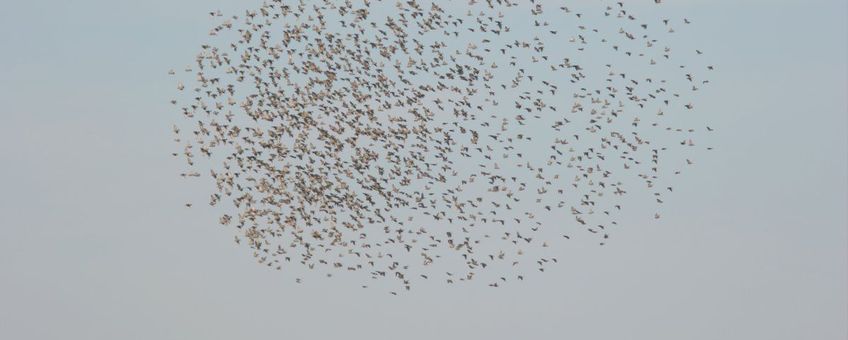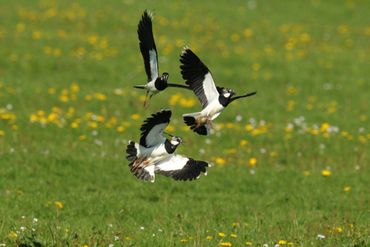
Plant roots exhibit starling behaviour
Wageningen UniversityIn his 40-year career in research, Professor Frank Berendse (1951) focused primarily on understanding the shifts in the species composition of wild plant communities. According to Berendse, the key to this understanding lies in the interplay between the mutual competition of plant species and the interactions with the fungi that infest them. “Similar to swarms of starlings, in which each starling only responds to what its neighbour is doing, the strong reaction of roots to each another leads to a high degree of spatial self-organisation. That process dampens the fluctuations in plant communities, making the risk of a plant species disappearing much smaller.” Berendse is currently writing a book on this topic.
Toxic blanket
 Looking at the current state of nature in the Netherlands, he pointed primarily at the ongoing biological impoverishment of farmland. This farmland is crucial for the survival of wild plants and animals in the Netherlands because it represents 60 percent of our land area, compared with only 12 percent that consists of real natural habitat. The dramatic impoverishment can be solved only by addressing the key factors involved. Restoration of grassland birds cannot succeed without raising the groundwater level and reducing fertilisation. In regions with arable farming, pesticide use should be drastically reduced to save farmland birds. “However, despite rapidly growing scientific evidence, the Dutch government is still unwilling to put an end to the toxic blanket that covers the Netherlands,” said Berendse.
Looking at the current state of nature in the Netherlands, he pointed primarily at the ongoing biological impoverishment of farmland. This farmland is crucial for the survival of wild plants and animals in the Netherlands because it represents 60 percent of our land area, compared with only 12 percent that consists of real natural habitat. The dramatic impoverishment can be solved only by addressing the key factors involved. Restoration of grassland birds cannot succeed without raising the groundwater level and reducing fertilisation. In regions with arable farming, pesticide use should be drastically reduced to save farmland birds. “However, despite rapidly growing scientific evidence, the Dutch government is still unwilling to put an end to the toxic blanket that covers the Netherlands,” said Berendse.
Regional nature networks
The fact that agriculture and nature are intertwined in large parts of the Netherlands has far-reaching implications for both farming and nature conservation. “We can preserve natural habitats in the long term only if we develop a coherent strategy for agriculture and nature, and make choices,” said Berendse in his farewell lecture entitled Tussen idealisme en wetenschap (‘Between idealism and science’). He advocates creating coherent regional plans for agriculture and nature. “This can best be done by establishing regional nature networks: clusters of nature reserves that include the adjacent farmland. Investments in agricultural nature management, organic farming and small-scale recreation should then be concentrated within these networks.”
More nature
In all cases, the area of land and water that is earmarked as nature reserve is the crucial factor that determines the survival of wild plants and animals. The most recent calculations of survival probability have shown that the required area is probably much greater than previously thought.
Text: Wageningen University
Photos: Luc Hoogenstein, Saxifraga (lead photo: similar to starlings, plant roots only respond to what their neighbour is doing); Piet Munsterman, Saxifraga
